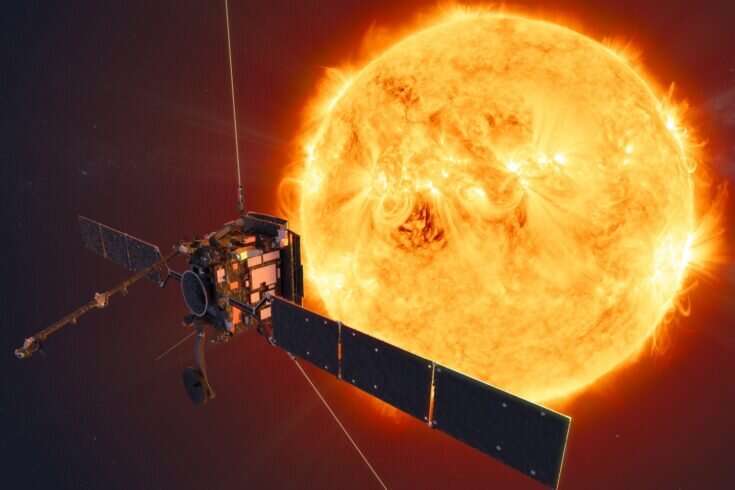The simulations were carried out using the Distributed Research utilizing Advanced Computing (DiRAC) high performance computing (HPC) facility's Data Intensive at Leicester service, funded by STFC.
When the solar wind hits the Earth, it is almost 10 times hotter than expected, with a temperature of about 100,000 to 200,000 degrees Celsius. The outer atmosphere of the sun, where the solar wind originates, is typically a million degrees Celsius.
Simulating the solar wind
Using these simulations, the team deduced that the solar wind stays hot for longer because of small-scale magnetic reconnection that forms in the turbulence of the solar wind.
This phenomenon occurs when two opposing magnetic field lines break and reconnect with each other, releasing huge amounts of energy. This is the same process that triggers large flares erupting from the sun's outer atmosphere.
Lead author Jeffersson Agudelo of UCL said: "Magnetic reconnection occurs almost spontaneously and all the time in the turbulent solar wind. This type of reconnection typically occurs across an area of several hundred kilometers—which is really tiny compared to the vast dimensions of space. Using the power of supercomputers, we have been able to approach this problem like never before. The magnetic reconnection events we observe in the simulation are so complicated and asymmetric, we are continuing our analysis of these events."
Using Solar Orbiter data
To confirm their predictions, the team will compare their data with that collected by the European Space Agency's (ESA) latest flagship mission, Solar Orbiter.
The Solar Orbiter is designed to find the origins and causes of the solar wind and study the workings of our sun.
Agudelo explained: "This is an incredibly exciting time to combine huge plasma simulations with the latest Solar Orbiter observations. Our understanding of reconnection and turbulence could take a major leap forward by combining our simulations with the new data from the Solar Orbiter."
One of the instruments onboard the spacecraft is STFC RAL Space's Spectral Investigation of the Coronal Environment (SPICE) instrument. The instrument will help solve one of the secrets of the sun—where does the solar wind come from and how does it escape from the sun.
Explore further



